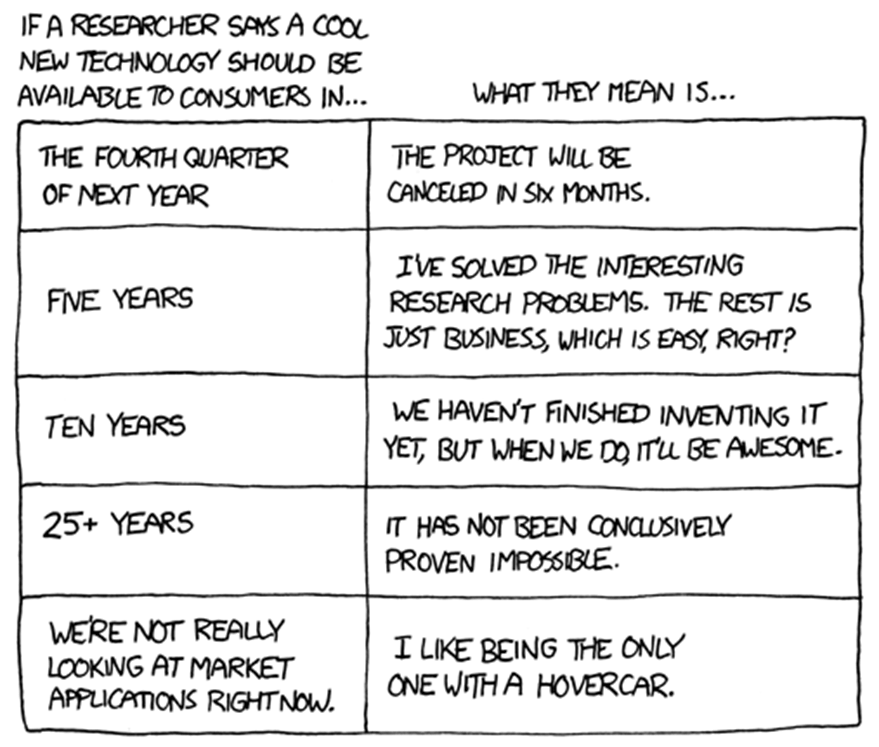Innovation That Matters: Unlocking Real Value From Your Technology Investments
As the Chief Technology Officer for a company whose purpose is ‘innovating today for a safer tomorrow’ it probably comes as little surprise that I am never far away from the topic of innovation.
As our teams work to ensure decision advantage for our customers in some of the world’s most demanding situations, we must constantly interrogate whether the solutions we are developing will truly solve their most complex challenges. Because if they don’t, they hold little value – however compelling they might seem. What we are constantly striving for is innovation that matters.
But when we think about what such valuable innovations look like, it quickly becomes clear that there is no single answer. Instead, we see several distinct ‘types’ of innovation. And while their goals are the same – delivering new and useful capabilities – they each come with their own specific challenges that must be overcome:
Technology-Led Innovation
When people picture innovation, it is usually of the technology-led variety. Typically this starts with a new technology being created, maybe a new metamaterial or advanced algorithm. Scientists and entrepreneurs then look for applications for the technology – and not always with immediate success.
An excellent example of this today is quantum computing. The field currently attracts significant commercial and academic investment, and it is easy to see why. The promise of the quantum bit (qubit) sits at least on par with the invention of the first transistor in its significance, with systems able to solve problems that are impossible for the class of computers we possess today.
Commercially, it is broadly assumed that the advent of operationally relevant quantum computers will have a profound impact on industries as far ranging as finance, drug design, logistics, and cyber security. But the key word here is assumed. We are at such an early stage in the technology’s development that it is hard to argue that such commercial use cases are little more than (educated) guesses based on what we think the systems will be capable of.
Timing can also be an issue. Known quantum applications, such as Peter Shor’s proof that a quantum computer could crack prime factorization-based encryption exponentially quicker than any classical computer, could require a device containing millions or billions of qubits. Today’s best machine has 127.
We’ve already seen what this can lead to: artificial intelligence has already been through several so-called ‘AI winters’ when early predictions of its potential have not been quickly realised. Only now, with the right convergence of algorithm, compute power, and data have widely usable AI applications begun to emerge. This begs the question of whether we are due a similar ‘quantum winter’.
None of this is to say that quantum computing won’t reach commercial viability, but this is key to technology-led innovation’s challenges: how long that takes and the applications that can actually be realised remain uncertain. There is little to reassure us that quantum computing will have a true value generating application in the foreseeable future.

It is 25 years away, promise. Some of the most compelling new technologies can remain frustrating just out of reach (Credit: xkcd)
As this example shows, the challenges with operationalizing technology-led innovation in a corporate setting are twofold:
- high failure rate: the technology is simply not yet a feasible alternative to current solutions, and
- low uptake rate: what we call the ‘valley of death’ for technology innovation
These challenges make technology-led innovation unpalatable to undertake for most companies. But with the exciting potential of so many technology-led innovations clear to see, how can companies effectively utilize them while avoiding the issues above? One good approach is to form strategic partnerships with those who specialize in technology-led innovation across domains the company cares about.
As an example, at Ultra we have created the Resilient Machine Learning Institute (ReMI): a collaboration between Ultra, École de Technologie Supérieure (ETS), and McGill University. ETS and McGill bring cutting-edge AI/ML capabilities being developed in an environment that is happy to work on technology with a high failure rate and long timeframes. Ultra brings domain knowledge and an ability to deliver the technology into the hands of operators. With this partnership, we are able to successfully deliver technology-led innovations that possess real value for our customers.
User-Challenge Driven Innovation
User-challenge driven innovation is perhaps the type of innovation that most corporate R&D programs attempt to employ. Here the innovation is driven by some insight into unmet or undermet user needs. These innovations can certainly be emergent or disruptive technology, but can just as easily be readily available commercial off the shelf (COTS) technology simply integrated in a clever way.
I like to specifically call out undermet needs; often there is already a solution to the user’s needs in place, but this shouldn’t scare off corporate investments if insight shows the user’s needs are not completely satisfied.
One of the best examples of user-challenge led innovation to solve some undermet user need is the original iPhone. Before its launch, many argued that the iPhone would flop because the consumers’ needs were being adequately met with existing products. They already made calls with a cell phone, took photos with digital cameras, and listened to music on mp3 players like the company’s popular iPod. But Apple sensed an opportunity and their instinct was correct. Consumers did indeed want an integrated platform with an easy to use UI/UX and the rest is history.

Uncertain beginnings: many weren’t convinced the original iPhone would be a success (Marian Weyo / Shutterstock.com)
We usually see two reasons for failure when companies attempt user-challenge driven innovation:
- lack of customer intimacy within the product design/engineering teams
- too much of a focus on features with too little focus on solving customer challenges.
To avoid the first failure, companies must ensure the product design teams are working hand-in-glove with the customer facing teams—the tighter the connection the better. Together, these teams must develop and fully understand the use case. That is, the pattern of life and pain points of the user as well as the ecosystem that the technology will live in. And to avoid the second failure, companies must fund solutions to user challenges based on clearly defined use cases, not just technology development. The key here is in the formulation of milestones, which are traditionally features and capability drops. Instead, milestones should be customer challenges solved.
At Ultra, we call this approach ‘mission-focused innovation’. Replacing milestones and deliverables on R&D project plans and roadmaps with customer challenges has the effect of focusing teams on understanding real needs and developing solutions instead of technology for technology’s sake. We don’t develop algorithms, we squeeze insights out of a universe of data. We don’t develop radios, we deliver the right information to the right place at the right time to ensure information advantage.
Intersectional Innovation
The final type of innovation, and perhaps the most important source of innovation for most companies, is intersectional innovation. It brings together different disciplines, domain knowledge, and perspectives to solve the most seemingly intractable problems.
One of the best examples of intersectional innovation is Claude Shannon’s channel capacity, which is the foundation of all modern wireless communication. Shannon effectively brought together two disparate disciplines at the time – electrical engineering and mathematics – to look at the transmission of information over a noisy channel in a way that no one had and solved a critical open problem in the process.
The challenge for companies here is simply one of consistent focus. Many corporations fall into the pit of focusing exclusively on user-challenge driven innovation, thus missing the vast opportunity to deliver intersectional innovation through properly leveraging the breadth of internal knowledge at their disposal.
There are many ways to foster intersectional innovation when a company has decided to deliberately unlock it. Innovation conferences, with attendance from a broad cross section of the company, can bring together a wide range of diverse expertise to look at existing challenges in new ways. Meanwhile, R&D proposals can include a section that describes how multiple perspectives are being operationalized to solve customer problems.
At Ultra this is a real focus for us. We have launched several initiatives designed to bring together our brightest minds to form a greater whole. We hold yearly innovation conferences, while our Ultra Labs team are constantly seeking out and combining the best ideas from across the business. Our recently launched Ultra Fellows programme brings together eight of our most renowned interdisciplinary experts to help formulate a holistic perspective to our technology strategy.
Innovation That Matters
As I talk to CTOs and business leaders across the industry, many companies are feel they could be doing more with their technology investments, with internal innovation programmes often failing to generate the value necessary to deliver on the company’s strategy.
But creating innovation that matters is always possible. While every type of innovation brings its own challenges, there are solutions to all of them.
Of course, there is a lot a more work that goes into successful innovation than just knowing how to manage these different approaches. But knowing what it is you are really trying to achieve is an essential first step in making every exciting concept you are working on a valuable reality.



